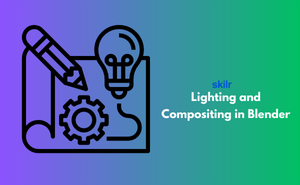👇 CELEBRATE CLOUD SECURITY DAY 👇
00
HOURS
00
MINUTES
00
SECONDS

Industry-endorsed certificates to strengthen your career profile.
Start learning immediately with digital materials, no delays.
Practice until you’re fully confident, at no additional charge.
Study anytime, anywhere, on laptop, tablet, or smartphone.
Courses and practice exams developed by qualified professionals.
Support available round the clock whenever you need help.
Easy-to-follow content with practice exams and assessments.
Join a global community of professionals advancing their skills.
With the increasing demand for high-quality 3D assets in movies, games, and advertising, positions such as Lighting Artist, Compositing Artist, VFX Artist, Environment Artist, and 3D Technical Artist are in high demand. Mastering lighting and compositing will make you highly competitive in these fields.
Yes, this course equips you with the skills needed to take on freelance projects. Whether it’s for game studios, animation projects, or creating product visualizations, your proficiency in lighting and compositing will enable you to work with clients across multiple industries and provide professional-quality results.
Effective lighting and compositing can transform a basic 3D model into a visually compelling scene. By mastering these skills, you'll be able to add depth, emotion, and realism to your work, which is crucial for making an impact in any creative industry.
By working on practical projects like night scene lighting, studio setups, and 3D environment presentations, the course prepares you to handle real-world challenges in creating realistic lighting for films, games, or architectural projects. It also teaches you how to optimize render settings for faster production workflows.
The course covers Blender's compositing tools, such as the node editor for creating complex post-processing effects. You will also learn techniques like color correction, glare effects, sharpening, and combining render layers to enhance your scenes.
While prior experience in Blender is beneficial, it is not mandatory. The course focuses on lighting and compositing, so as long as you have a basic understanding of 3D tools, you will be able to follow along and apply the concepts taught.
After completing the course, you can pursue various roles in the 3D animation, game development, VFX, or architectural visualization industries, including 3D lighting artist, VFX compositor, environment artist, and render artist.
You will gain hands-on skills in Blender's lighting techniques, including manipulating light sources, using HDRI skyboxes, ambient occlusion, and real-time rendering effects. The course also covers compositing tools, post-processing effects, and the creation of complex lighting setups for both interior and exterior environments.
Yes, this course is designed to start with the basics of lighting and compositing, making it suitable for beginners. It gradually introduces advanced techniques, so both new learners and those with prior Blender experience can benefit from it.
Mastering lighting and compositing in Blender enhances your ability to create visually stunning 3D scenes, an essential skill in industries such as game development, animation, architecture visualization, and VFX. This skill set can significantly improve the realism and aesthetic appeal of your projects, making you a valuable asset to potential employers or clients.